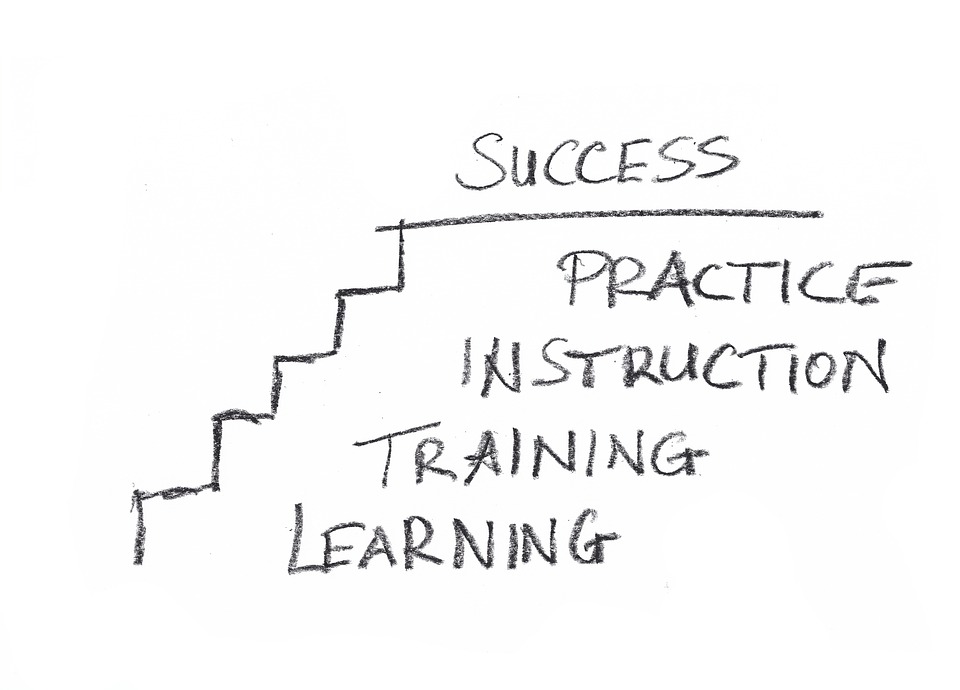Workforce Development
The Rise of the Digital Workforce: How Automation is Redefining the Job Market

As the world becomes increasingly digital, the workforce is undergoing a significant transformation. With the rise of automation, many jobs are being replaced by machines, and the way we work is changing forever. In this article, we’ll explore the trends shaping the future of work and what it means for employees, employers, and the economy as a whole.
The Rise of Automation
Automation has been a growing trend in recent years, with advancements in artificial intelligence (AI), machine learning, and robotics enabling companies to streamline processes and reduce labor costs. According to a report by McKinsey, up to 75% of all jobs could be automated by 2030. This means that millions of workers will need to adapt to new roles or find alternative ways to make a living.
The Impact on Jobs
While some jobs will be replaced, many new ones will emerge that we can’t even imagine yet. The key is to be prepared and to develop skills that are in demand. For example, the demand for data scientists and analysts is expected to grow, as companies need experts to interpret the vast amounts of data generated by automation.
The Shift to a Knowledge Economy
The rise of automation is also driving a shift towards a knowledge economy. As machines and software take over routine and repetitive tasks, humans will need to focus on high-value tasks that require creativity, problem-solving, and critical thinking. This means that workers will need to develop skills that are difficult to automate, such as empathy, emotional intelligence, and complex problem-solving.
New Job Types and Industries
New job types and industries will emerge as a result of automation. For example, the rise of the gig economy has created new opportunities for freelancers and independent workers. Other industries, such as healthcare and education, will see significant changes as well. For instance, virtual reality and artificial intelligence are already being used in healthcare to train medical professionals and treat patients.
The Role of Education and Training
Educators and policymakers must work together to prepare students for the changing job market. This means incorporating skills like coding, data analysis, and digital literacy into curricula, as well as providing training programs for workers who are displaced by automation. Governments can also play a critical role by investing in infrastructure, social services, and retraining programs.
The Need for Continuous Learning
The rise of automation means that workers will need to continuously update their skills to remain competitive. This requires a mindset shift towards lifelong learning, with a focus on continuous professional development and upskilling. Companies can also play a crucial role by providing training and development opportunities for their employees.
The Impact on Businesses
Businesses will need to adapt to the changing job market by investing in automation, retraining their employees, and rethinking their business models. This may involve reducing costs, improving efficiency, and finding new revenue streams. Companies that fail to adapt may struggle to remain competitive and may even face extinction.
The Role of Leadership
Effective leadership will be crucial in the age of automation. Leaders will need to inspire and motivate their teams, provide them with the necessary training and resources, and create a culture of continuous learning and improvement. They will also need to be prepared to make tough decisions about staffing and restructuring as a result of automation.
Conclusion
The rise of the digital workforce is a significant challenge and an opportunity. As we move forward, it’s essential to prioritize education, training, and lifelong learning. By doing so, we can ensure that workers are prepared for the changing job market and that businesses can thrive in a rapidly evolving world. The future of work is uncertain, but with the right mindset and strategies, we can create a brighter future for all.
FAQs
What are the most in-demand skills for the future job market?
According to various reports, the most in-demand skills for the future job market include data science, artificial intelligence, cloud computing, cybersecurity, and digital marketing.
How can workers prepare for the changing job market?
Workers can prepare for the changing job market by developing skills that are difficult to automate, such as critical thinking, problem-solving, and creativity. They should also be open to continuous learning and upskilling, and be prepared to adapt to new roles and industries.
What is the role of education in preparing students for the future job market?
Educators and policymakers must work together to incorporate skills like coding, data analysis, and digital literacy into curricula, as well as provide training programs for workers who are displaced by automation. This will help students develop the skills needed to succeed in the changing job market.
How can businesses adapt to the changing job market?
Businesses can adapt to the changing job market by investing in automation, retraining their employees, and rethinking their business models. They may also need to reduce costs, improve efficiency, and find new revenue streams to remain competitive.
Workforce Development
The Future of Manufacturing: How Automation Will Shape the Industry

By 2025, future of work predictions suggest that automation will replace over 75 million jobs, while creating 133 million new ones. The manufacturing industry is on the cusp of a revolution, driven by technological advancements in automation, artificial intelligence, and the Internet of Things (IoT). As we look to the future, it’s clear that automation will play a significant role in shaping the industry.
Introduction to Automation in Manufacturing
Automation has been a part of the manufacturing industry for decades, but recent advancements have made it more accessible and affordable for businesses of all sizes. Automation involves the use of machines and computer systems to perform tasks that were previously done by humans, increasing efficiency and reducing errors. From assembly lines to quality control, automation is being used in various aspects of manufacturing to improve productivity and reduce costs.
Benefits of Automation in Manufacturing
The benefits of automation in manufacturing are numerous, including increased efficiency, improved product quality, and reduced labor costs. Automation also enables manufacturers to produce customized products at a lower cost, making it an attractive option for businesses looking to differentiate themselves in a competitive market. Additionally, automation helps reduce the risk of workplace accidents and injuries, creating a safer working environment for employees.
The Impact of Artificial Intelligence on Manufacturing
Artificial intelligence (AI) is a key driver of automation in manufacturing, enabling machines to learn from data and make decisions in real-time. AI-powered machines can analyze production data, detect anomalies, and make adjustments to optimize production processes. This not only improves efficiency but also enables manufacturers to respond quickly to changes in demand or supply chain disruptions.
Applications of AI in Manufacturing
AI is being applied in various areas of manufacturing, including predictive maintenance, quality control, and supply chain management. For example, AI-powered sensors can detect equipment failures before they occur, reducing downtime and increasing overall equipment effectiveness. Similarly, AI-powered quality control systems can inspect products in real-time, detecting defects and improving product quality.
The Role of the Internet of Things (IoT) in Manufacturing
The Internet of Things (IoT) is a network of physical devices, vehicles, and other items that are embedded with sensors, software, and connectivity, allowing them to collect and exchange data. In manufacturing, IoT enables the creation of smart factories, where machines and devices can communicate with each other and with humans in real-time. This enables manufacturers to optimize production processes, predict maintenance needs, and improve product quality.
Applications of IoT in Manufacturing
IoT is being applied in various areas of manufacturing, including asset tracking, inventory management, and energy management. For example, IoT sensors can track the location and status of assets, enabling manufacturers to optimize production planning and reduce inventory costs. Similarly, IoT sensors can monitor energy consumption, enabling manufacturers to optimize energy usage and reduce costs.
The Future of Work in Manufacturing
As automation and AI continue to transform the manufacturing industry, there are concerns about the impact on jobs and the future of work. While automation may replace some jobs, it will also create new ones, such as data scientists, AI engineers, and robotics technicians. Manufacturers will need to invest in training and upskilling programs to ensure that workers have the skills needed to work with automated systems.
Preparing for the Future of Work
To prepare for the future of work, manufacturers need to invest in education and training programs that focus on emerging technologies such as AI, robotics, and data analytics. They also need to create a culture of lifelong learning, where workers are encouraged to continuously update their skills and knowledge. Additionally, manufacturers need to consider the social and economic implications of automation, ensuring that the benefits are shared fairly among workers, communities, and society as a whole.
Conclusion
In conclusion, the future of manufacturing is closely tied to the adoption of automation, AI, and IoT. While there are challenges to be addressed, the benefits of these technologies are clear, including increased efficiency, improved product quality, and reduced costs. As manufacturers invest in these technologies, they need to prioritize education and training, ensuring that workers have the skills needed to thrive in an automated workplace. By working together, we can create a future of manufacturing that is more productive, sustainable, and equitable for all.
Frequently Asked Questions (FAQs)
Q: Will automation replace human workers in manufacturing?
A: While automation may replace some jobs, it will also create new ones, such as data scientists, AI engineers, and robotics technicians.
Q: What skills do workers need to thrive in an automated workplace?
A: Workers need skills in emerging technologies such as AI, robotics, and data analytics, as well as soft skills such as critical thinking, problem-solving, and collaboration.
Q: How can manufacturers prepare for the future of work?
A: Manufacturers need to invest in education and training programs, create a culture of lifelong learning, and consider the social and economic implications of automation.
Q: What are the benefits of automation in manufacturing?
A: The benefits of automation in manufacturing include increased efficiency, improved product quality, and reduced costs.
Q: What role will AI play in the future of manufacturing?
A: AI will play a significant role in the future of manufacturing, enabling machines to learn from data and make decisions in real-time, and improving efficiency, product quality, and supply chain management.
Workforce Development
How Technology is Revolutionizing the Gig Economy: The Rise of Online Marketplaces and Platforms

The freelance and gig economy growth has been exponential, with more people turning to non-traditional work arrangements. This shift has been driven by the rise of online marketplaces and platforms that connect workers with clients and customers. As technology continues to advance, the gig economy is expected to continue its rapid growth, changing the way we work and live.
What is the Gig Economy?
The gig economy refers to a labor market characterized by short-term, flexible work arrangements. This can include freelance work, contract work, and temporary employment. The gig economy has been growing rapidly in recent years, with more people seeking flexible work arrangements that allow them to balance work and life.
Key Characteristics of the Gig Economy
The gig economy has several key characteristics that distinguish it from traditional employment. These include flexibility, autonomy, and project-based work. Gig workers are often independent contractors who work on a project-by-project basis, allowing them to choose when and how much they work.
The Rise of Online Marketplaces and Platforms
Online marketplaces and platforms have been instrumental in the growth of the gig economy. These platforms connect workers with clients and customers, providing a convenient and efficient way to find work and hire workers. Popular platforms include Upwork, Freelancer, and Fiverr, which offer a range of services from writing and design to programming and consulting.
Benefits of Online Marketplaces and Platforms
Online marketplaces and platforms offer several benefits to both workers and clients. For workers, these platforms provide access to a global market, allowing them to find work and clients from all over the world. For clients, these platforms offer a convenient and efficient way to find and hire skilled workers, often at a lower cost than traditional employment arrangements.
Technological Advancements Driving the Gig Economy
Several technological advancements have driven the growth of the gig economy. These include the rise of mobile devices, cloud computing, and artificial intelligence. Mobile devices have made it possible for workers to work remotely and access work opportunities on the go. Cloud computing has enabled the development of online marketplaces and platforms, while artificial intelligence has improved the efficiency and effectiveness of these platforms.
Impact of Artificial Intelligence on the Gig Economy
Artificial intelligence has had a significant impact on the gig economy, improving the efficiency and effectiveness of online marketplaces and platforms. AI-powered algorithms can match workers with clients and projects, reducing the time and effort required to find work. AI can also help to improve the quality of work, by providing workers with real-time feedback and guidance.
Benefits of the Gig Economy
The gig economy offers several benefits to workers, clients, and the economy as a whole. For workers, the gig economy provides flexibility, autonomy, and the opportunity to pursue work that is meaningful and fulfilling. For clients, the gig economy offers access to a global pool of skilled workers, often at a lower cost than traditional employment arrangements. The gig economy also benefits the economy as a whole, by providing new opportunities for economic growth and development.
Challenges Facing the Gig Economy
Despite the benefits of the gig economy, there are also several challenges that need to be addressed. These include the lack of job security, benefits, and protections for gig workers. Gig workers are often classified as independent contractors, which means they are not entitled to the same benefits and protections as traditional employees.
Future of the Gig Economy
The future of the gig economy is uncertain, but it is clear that it will continue to play a major role in the labor market. As technology continues to advance, we can expect to see new opportunities and challenges emerge. One potential development is the rise of platform cooperativism, which involves workers owning and controlling the platforms they work on.
Platform Cooperativism
Platform cooperativism is a new model for the gig economy, which involves workers owning and controlling the platforms they work on. This model has the potential to address some of the challenges facing gig workers, by providing them with more control over their work and a greater share of the profits.
Conclusion
In conclusion, the gig economy is a rapidly growing sector of the labor market, driven by the rise of online marketplaces and platforms. While there are several benefits to the gig economy, there are also challenges that need to be addressed. As technology continues to advance, we can expect to see new opportunities and challenges emerge. By understanding the gig economy and its implications, we can work to create a more equitable and sustainable labor market for all.
Frequently Asked Questions
What is the gig economy?
The gig economy refers to a labor market characterized by short-term, flexible work arrangements. This can include freelance work, contract work, and temporary employment.
What are the benefits of the gig economy?
The gig economy offers several benefits to workers, clients, and the economy as a whole. For workers, the gig economy provides flexibility, autonomy, and the opportunity to pursue work that is meaningful and fulfilling. For clients, the gig economy offers access to a global pool of skilled workers, often at a lower cost than traditional employment arrangements.
What are the challenges facing the gig economy?
Despite the benefits of the gig economy, there are also several challenges that need to be addressed. These include the lack of job security, benefits, and protections for gig workers. Gig workers are often classified as independent contractors, which means they are not entitled to the same benefits and protections as traditional employees.
What is the future of the gig economy?
The future of the gig economy is uncertain, but it is clear that it will continue to play a major role in the labor market. As technology continues to advance, we can expect to see new opportunities and challenges emerge. One potential development is the rise of platform cooperativism, which involves workers owning and controlling the platforms they work on.
Workforce Development
From Intern to Executive: The Rise of Millennial Leaders

Navigating generational workplace dynamics, millennials are redefining leadership roles. With their unique perspective and skills, they are rising through the corporate ranks, bringing fresh ideas and energy to the table. As the workplace evolves, it’s essential to understand the factors contributing to their success.
Understanding Millennial Leaders
Millennials, born between 1981 and 1996, are the largest generation in the workforce, making up over 35% of the global workforce. They are tech-savvy, diverse, and values-driven, with a strong desire to make a positive impact. Their leadership style is characterized by collaboration, empathy, and flexibility.
Key Characteristics of Millennial Leaders
Millennial leaders are known for their adaptability, creativity, and resilience. They are not afraid to challenge traditional norms and are open to new ideas and perspectives. Their ability to navigate complex systems and think critically has earned them a reputation as innovative problem-solvers.
Millennial Leadership Styles
Millennial leaders tend to prioritize teamwork and open communication, fostering a sense of community and inclusivity. They are also adept at using technology to streamline processes and enhance productivity. Their leadership style is often described as transformational, focusing on inspiring and motivating others to achieve common goals.
The Rise of Millennial Leaders
The rise of millennial leaders can be attributed to several factors, including their education, skills, and experience. Many millennials have pursued higher education, acquiring valuable skills in areas like technology, marketing, and finance. Their experience in the workforce has also equipped them with the knowledge and expertise needed to succeed in leadership roles.
Education and Skills
Millennials have had access to a wide range of educational opportunities, including online courses, workshops, and degree programs. They have developed skills in areas like data analysis, digital marketing, and project management, making them highly competitive in the job market.
Experience and Mentorship
Many millennials have gained valuable experience through internships, volunteer work, and entry-level positions. They have also had the opportunity to learn from experienced mentors, who have guided them in their career development and provided valuable feedback and support.
Challenges Faced by Millennial Leaders
Despite their many strengths, millennial leaders face unique challenges in the workplace. They must navigate complex organizational structures, manage diverse teams, and balance competing priorities. They must also contend with stereotypes and biases, which can impact their credibility and authority.
Overcoming Stereotypes and Biases
Millennial leaders must work to overcome common stereotypes, such as being entitled or lacking experience. They must demonstrate their capabilities and build trust with their colleagues and superiors. By showcasing their skills and achievements, they can establish themselves as credible and effective leaders.
Managing Diversity and Inclusion
Millennial leaders must also navigate diverse teams, managing different perspectives and opinions. They must foster a culture of inclusivity, promoting diversity and equity in the workplace. By doing so, they can create a positive and productive work environment.
Best Practices for Millennial Leaders
To succeed as a millennial leader, it’s essential to develop key skills and strategies. This includes building a strong network, prioritizing self-care, and staying adaptable. By following these best practices, millennial leaders can overcome challenges and achieve their goals.
Building a Strong Network
Millennial leaders should prioritize building a strong network of colleagues, mentors, and peers. This network can provide valuable support, guidance, and opportunities for growth and development.
Prioritizing Self-Care
Millennial leaders must also prioritize self-care, managing their physical and mental health. This includes taking breaks, practicing mindfulness, and engaging in activities that promote well-being.
Conclusion
In conclusion, millennial leaders are redefining the workplace with their unique perspective and skills. By understanding their characteristics, leadership styles, and challenges, we can better support their growth and development. As they continue to rise through the corporate ranks, it’s essential to recognize their value and contributions, providing opportunities for them to thrive and succeed.
Frequently Asked Questions
What are the key characteristics of millennial leaders?
Millennial leaders are known for their adaptability, creativity, and resilience. They are tech-savvy, diverse, and values-driven, with a strong desire to make a positive impact.
What are the biggest challenges faced by millennial leaders?
Millennial leaders face unique challenges, including navigating complex organizational structures, managing diverse teams, and balancing competing priorities. They must also contend with stereotypes and biases, which can impact their credibility and authority.
What are the best practices for millennial leaders?
To succeed as a millennial leader, it’s essential to develop key skills and strategies. This includes building a strong network, prioritizing self-care, and staying adaptable. By following these best practices, millennial leaders can overcome challenges and achieve their goals.
How can organizations support millennial leaders?
Organizations can support millennial leaders by providing opportunities for growth and development, offering mentorship and coaching, and fostering a culture of inclusivity and diversity. By doing so, they can create a positive and productive work environment that allows millennial leaders to thrive and succeed.
-

 Career Advice4 months ago
Career Advice4 months agoInterview with Dr. Kristy K. Taylor, WORxK Global News Magazine Founder
-

 Diversity and Inclusion (DEIA)4 months ago
Diversity and Inclusion (DEIA)4 months agoSarah Herrlinger Talks AirPods Pro Hearing Aid
-

 Career Advice4 months ago
Career Advice4 months agoNetWork Your Way to Success: Top Tips for Maximizing Your Professional Network
-

 Changemaker Interviews4 months ago
Changemaker Interviews4 months agoUnlocking Human Potential: Kim Groshek’s Journey to Transforming Leadership and Stress Resilience
-

 Diversity and Inclusion (DEIA)4 months ago
Diversity and Inclusion (DEIA)4 months agoThe Power of Belonging: Why Feeling Accepted Matters in the Workplace
-

 Global Trends and Politics4 months ago
Global Trends and Politics4 months agoHealth-care stocks fall after Warren PBM bill, Brian Thompson shooting
-

 Global Trends and Politics4 months ago
Global Trends and Politics4 months agoUnionization Goes Mainstream: How the Changing Workforce is Driving Demand for Collective Bargaining
-

 Training and Development4 months ago
Training and Development4 months agoLevel Up: How Upskilling Can Help You Stay Ahead of the Curve in a Rapidly Changing Industry









